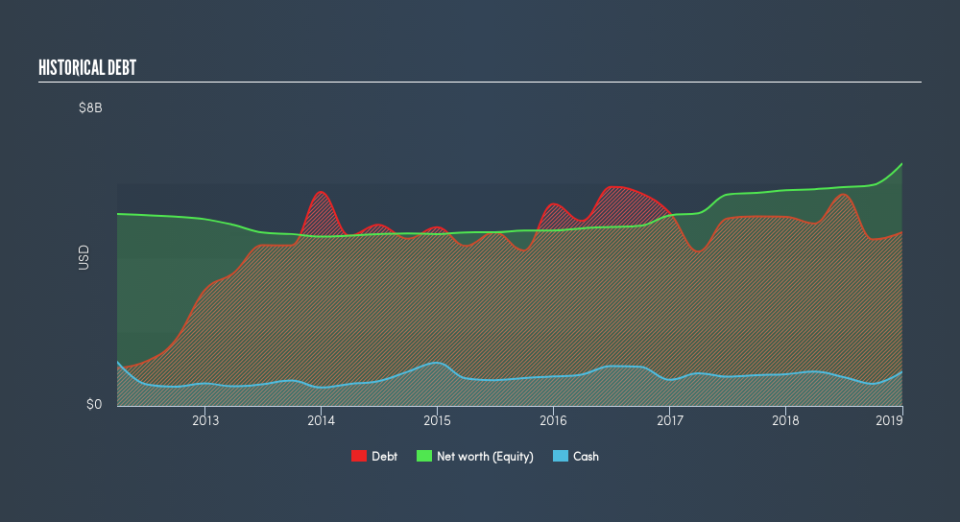Can These Factors Give You An Edge In People’s United Financial, Inc. (NASDAQ:PBCT)?

As a small-cap finance stock with a market capitalisation of US$6.4b, the risk and profitability of People’s United Financial, Inc. (NASDAQ:PBCT) are largely tied to the underlying economic growth of the region it operates in US. Given that banks operate by reinvesting deposits in the form of loans, negative economic growth may lower the level of saving deposits and demand for loans, directly affecting those banks’ levels of cash flows. After the Financial Crisis in 2008, a set of reforms called Basel III was created with the purpose of strengthening regulation, risk management and supervision in the banking sector. These reforms target banking regulations and intends to enhance financial institutions’ ability to absorb shocks resulting from economic stress which could expose banks like People’s United Financial to vulnerabilities. Its financial position may weaken in an adverse macro event such as political instability which is why it is crucial to understand how well the bank manages its risks. Strong management of leverage and liquidity could place the bank in a protected position at the face of macro headwinds. We can gauge People’s United Financial’s risk-taking behaviour by analysing three metrics for leverage and liquidity which I will take you through now.
See our latest analysis for People’s United Financial
Is PBCT’s Leverage Level Appropriate?
Banks with low leverage are exposed to lower risks around their ability to repay debt. A bank’s leverage can be thought of as the amount of assets it holds compared to its own shareholders’ funds. While financial companies will always have some leverage for a sufficient capital buffer, People’s United Financial’s leverage ratio of 7.33x is significantly below the appropriate ceiling of 20x. This means the bank has a sensibly high level of equity compared to the level of debt it has taken on to maintain operations which places it in a strong position to pay back its debt in unforeseen circumstances. If the bank needs to firm up its capital cushion, it has ample headroom to increase its debt level without deteriorating its financial position.
How Should We Measure PBCT’s Liquidity?


Since loans are relatively illiquid, we should know how much of People’s United Financial’s total assets are comprised of these loans. Generally, they should make up less than 70% of total assets, but its current level of 73% means the bank has lent out 3.14% above the sensible upper limit. This indicates that revenue is dependent on this particular asset but also the bank is more exposed to default compared to banks with less loans.
Does PBCT Have Liquidity Mismatch?
Banks profit by lending out its customers’ deposits as loans and charge an interest on the principle. Loans are generally fixed term which means they cannot be readily realized, conversely, on the liability side, customer deposits must be paid in very short notice and on-demand. The discrepancy between loan assets and deposit liabilities threatens the bank’s financial position. If an adverse event occurs, it may not be well-placed to repay its depositors immediately. Relative to the prudent industry loan to deposit level of 90%, People’s United Financial’s ratio of over 97% is higher, which places the bank in a relatively dangerous territory to go into negative discrepancy in liquidity. Basically, for $1 of deposits with the bank, it lends out over $0.9 which is imprudent.
Next Steps:
Today, we’ve only explored one aspect of People’s United Financial. However, as a potential stock investment, there are many more fundamentals you need to consider. Below, I’ve compiled three key factors you should further examine:
Future Outlook: What are well-informed industry analysts predicting for PBCT’s future growth? Take a look at our free research report of analyst consensus for PBCT’s outlook.
Valuation: What is PBCT worth today? Has the future growth potential already been factored into the price? The intrinsic value infographic in our free research report helps visualize whether PBCT is currently mispriced by the market.
Other High-Performing Stocks: Are there other stocks that provide better prospects with proven track records? Explore our free list of these great stocks here.
We aim to bring you long-term focused research analysis driven by fundamental data. Note that our analysis may not factor in the latest price-sensitive company announcements or qualitative material.
If you spot an error that warrants correction, please contact the editor at editorial-team@simplywallst.com. This article by Simply Wall St is general in nature. It does not constitute a recommendation to buy or sell any stock, and does not take account of your objectives, or your financial situation. Simply Wall St has no position in the stocks mentioned. Thank you for reading.

